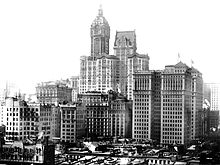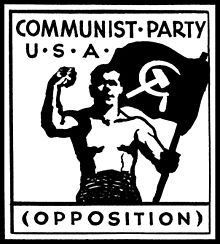Teachers Union
[2] Its principal co-founders were Henry Linville (a Harvard-educated, Socialist, pacifist biology teacher) and Abraham Lefkowitz (a New York University-educated academic).[2] Heading the Research Study Group was TU secretary (and CPUSA member) Benjamin Mandel (later director of research for the House Un-American Activities Committee or HUAC); members (not yet split into two rival communist parties) included: Ben Davidson, Bertram Wolfe, Jacob Lind, Rachel Ragozin, Jack Hardy (party name of Dale Zysman), Sarah Golden, Clara Reibert, Abraham Zitron, and Isidore Begun.[2] In a counter-attack, the two communist factions made their own minority report (written by Begun, Davidson, Florence Gitlin, and David M. Wittes) on the TU's administration.[2] On April 29, 1933, John Dewey delivered the Committee of Five's report, which called for investigation into the two groups and whether a new local might form free from communist influence.[4] The CPUSA then tried to gain control of its parent, the American Federation of Teachers (whose president at that time was Jerome Davis, later involved in a sensational libel suit).[4] At the same time, the CPUSA tried to mobilize Teachers Union members into joined various United Front-style group, including: During an August 1935 national convention of the AFT, the TU administration asked for a referendum to reorganize, voted down 100 to 79.The TU then became Local 555 of the United Public Workers (UPW), affiliate of the AFL's national rival, the Congress of Industrial Organizations (CIO).[1] After World War II, the Teachers Union found itself attacked by "Hearst press, the American Legion, and the rural-dominated state legislatures.The TU's primary objectives were to overcome barriers to education, which include racial discrimination and poverty – in addition to higher salaries and better working conditions for teachers.



List of education trade unionsHenry LinvilleAbraham LefkowitzAmerican Federation of TeachersNew York CityCommunist Party USAMulberry StreetLower East SideSinger Buildingworld's tallest buildingHarvardSocialistpacifistNew York Universityloyalty oathsRed ScareCommunist Party (Majority Group)Workers Party of AmericaCominternNew York Workers SchoolCommunist InternationalBenjamin MandelHouse Un-American Activities CommitteeBen DavidsonBertram WolfeDale ZysmanJoseph StalinJay Lovestone1929 crashWall StreetGreat DepressionNew DealWork Projects AdministrationJoseph LeboitJohn DeweyUnited FrontJerome DavisJefferson School of Social ScienceFriends of the Soviet UnionNational Council of American–Soviet FriendshipAmerican League Against War and FascismAmerican Medical BureauJoint Anti-Fascist Refugee CommitteeInternational Labor DefenseTeachers GuildAmerican Federation of LaborAbe MeeropolStrange FruitUnited Public WorkersCongress of Industrial OrganizationsWorld War IIHearstAmerican LegionRobert W. IversenCity College of New YorkYoung Communist League of AmericaAmerican Student UnionUniversity of the State of New YorkNew York City Teachers UnionClarence TaylorUnited Federation of TeachersTeachers' GuildMcCarthyitered-baitingHarold I. CammerCharles J. HendleyBella DoddIrving AdlerMorris U. CohenMyra PageUnited Public Workers of AmericaTaylor, ClarenceIversen, Robert W.Sullivan, William C.33 Revolutions Per MinuteHeins, MarjorieSchrecker, EllenTaft, Philip